PROTECT YOUR DNA WITH QUANTUM TECHNOLOGY
Orgo-Life the new way to the future Advertising by AdpathwayFlowering annuals with their colorful and spectacular displays are lovely. But, they tend to be high-maintenance and only last for a season or two. Flowering perennials, on the other hand, keep your garden full of foliage and flowers year after year. When we find the right ones that adapt to our climate, they become even more carefree and beneficial.
In addition to the time and effort you save planting low-maintenance perennials, there are other perks to consider. Since they return every year, these are more cost-effective. You can rely on these plants to bring consistent color and structure to your space.
Many of these plants are drought-tolerant and have good pest resistance, which makes them more eco-friendly. They do a great job of supporting pollinators and the garden ecosystem with little effort.
Here are some of my favorite Southern perennial flowers.
Purple Coneflower Echinacea

Purple Coneflower Echinacea Seeds


Colorado Blend Yarrow Seeds
Purple Coneflower
 These hardy blooms don’t take over but keep coming back.
These hardy blooms don’t take over but keep coming back.Purple coneflowers, and other colors for that matter, are a beloved Southern perennial flower. They are native to the southern United States, and tolerate heat, drought, and poor soil with ease. Once you plant these in the garden, you will delight in seeing how nicely they come back every year.
This beauty doesn’t spread aggressively, but will re-seed if you allow it to. That is, if the overwintering birds don’t get hold of the dried seed heads.
Purple coneflowers are excellent for supporting pollinators and other small animals. They naturalize easily and make fabulous cut flowers as well.
Black-Eyed Susan
 Rudbeckia is easy to grow and always ready to self-sow.
Rudbeckia is easy to grow and always ready to self-sow.Cheerful and sun-loving, black-eyed Susans are an excellent perennial for your Southern garden. This is another native that does a wonderful job of supporting pollinators. Native bees will flock to it and help it to self-sow, which it does freely. It’s not aggressive, and leaf rosettes are obvious, pulling up easily if you end up with too many.
Black-eyed Susans are charming and nostalgic. They are deer-resistant, and though not altogether pest-free, they are unappealing to most.
This is one of the most dependable, easy-going perennials in my garden. They add a significant amount of color with their free-blooming habit. Their fuzzy foliage adds a pop of texture to your beds.
Lanceleaf Tickseed
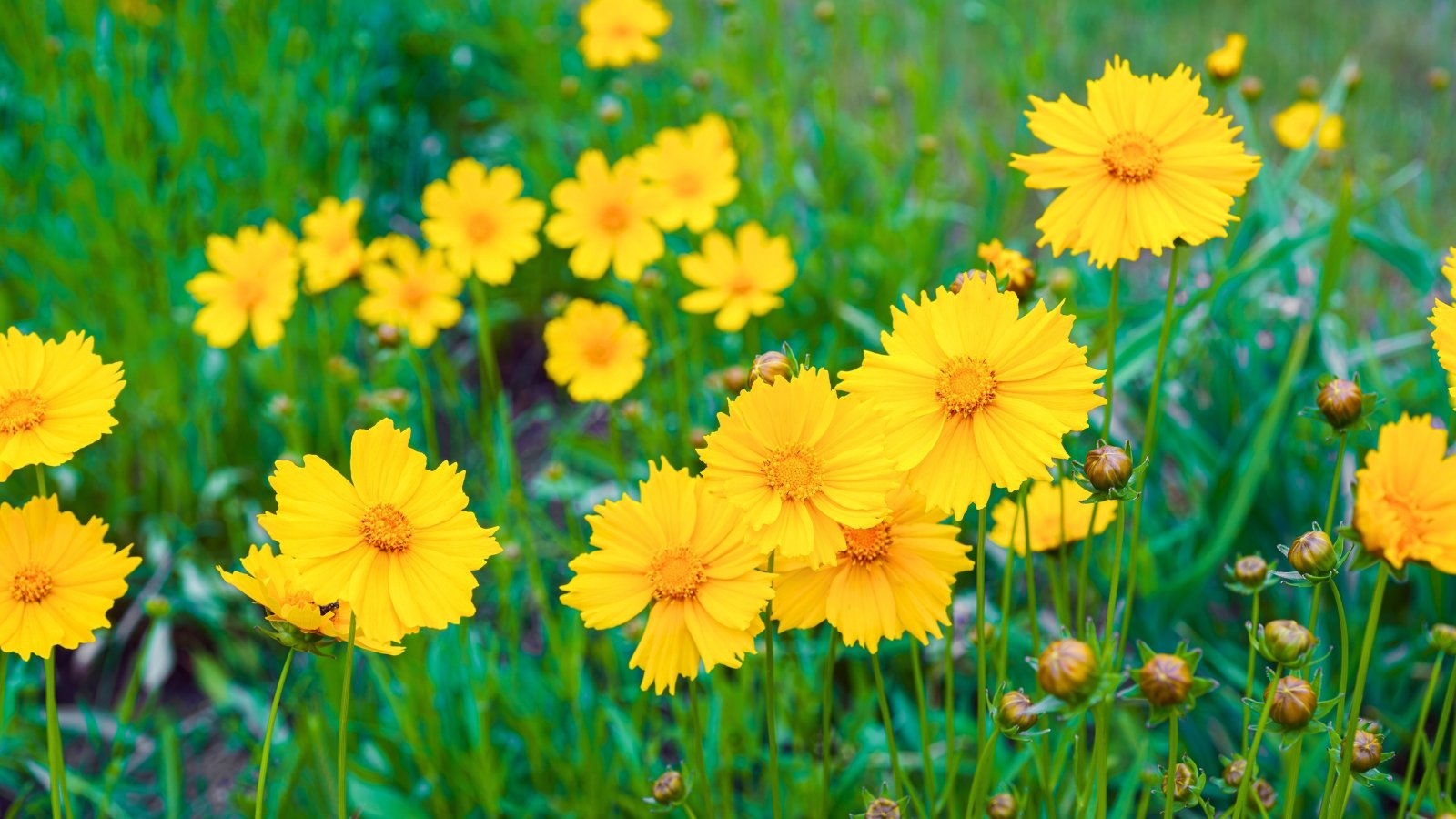 Deadheading keeps its cheerful blossoms coming back strong.
Deadheading keeps its cheerful blossoms coming back strong.Tickseed is a delightful flowering perennial that every southern gardener should consider. Masses of cheerful, golden, daisy-like flowers bloom for an extended period from spring through fall. It’s low-growing in tight clumps, making it ideal for borders and pollinator gardens.
I love this perennial for its carefree nature. Pollinators love it, and deer rarely bother it. Deadheading will keep this Southern perennial flower producing a bounty of blooms throughout the season. It’s also frost-tolerant, so in warmer climates, it remains evergreen.
Yarrow
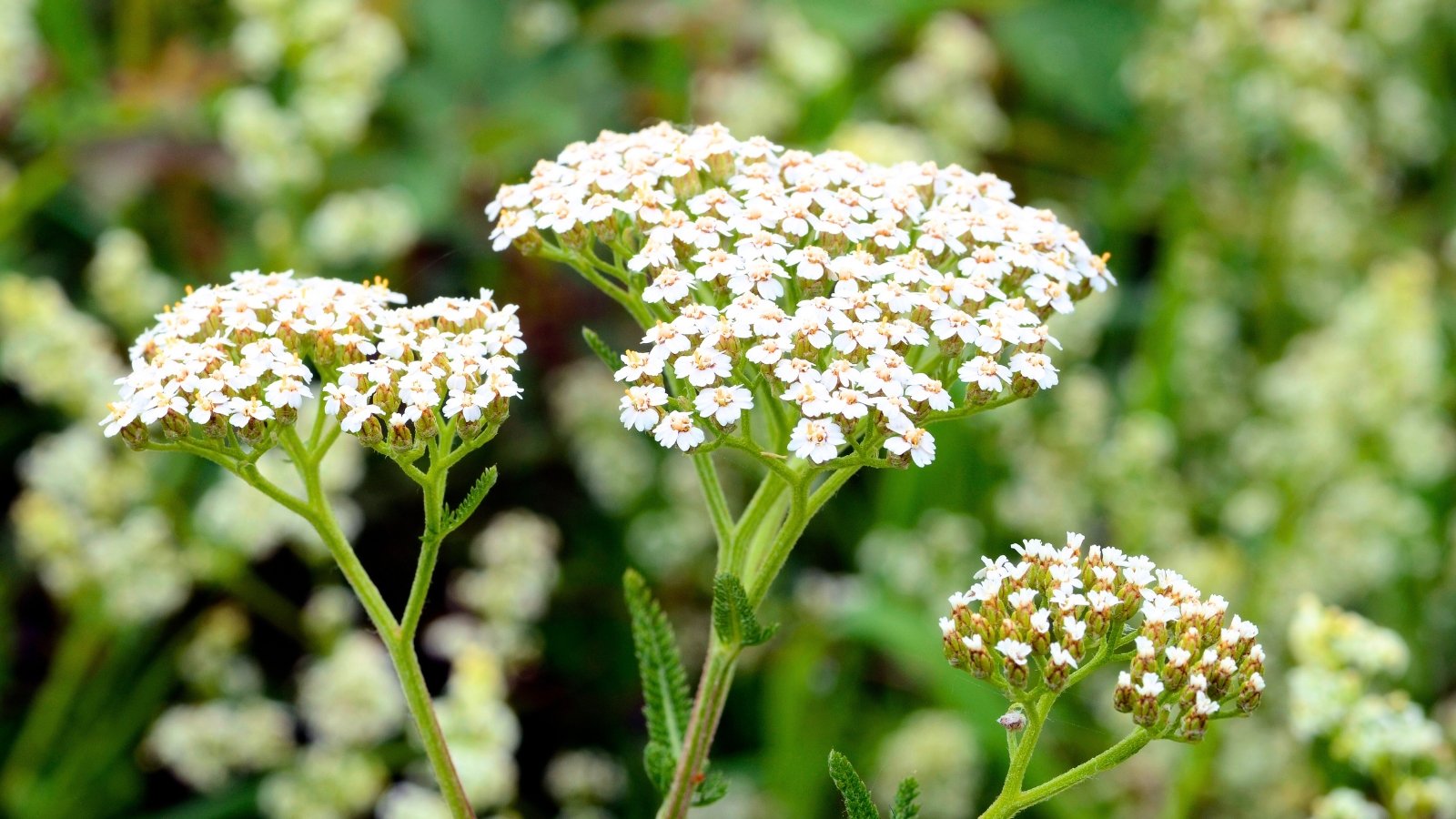 Flowers attract helpful pollinators while staying low-maintenance.
Flowers attract helpful pollinators while staying low-maintenance.Yarrow is an excellent Southern perennial flower. It’s tough, drought-tolerant, and well-suited to full sun, heat, and humidity. Make sure it has proper air circulation to prevent fungal diseases in humid environments. Preferring dry soil, you’ll rarely need to water your yarrow.
Once established, yarrow requires minimal maintenance, except for managing its spread. It’s deer-resistant and an excellent food source for pollinators and other beneficial insects.
With its colorful flower umbels and long, flexible stems, it makes a fantastic perennial addition to the cutting garden.
Bee Balm
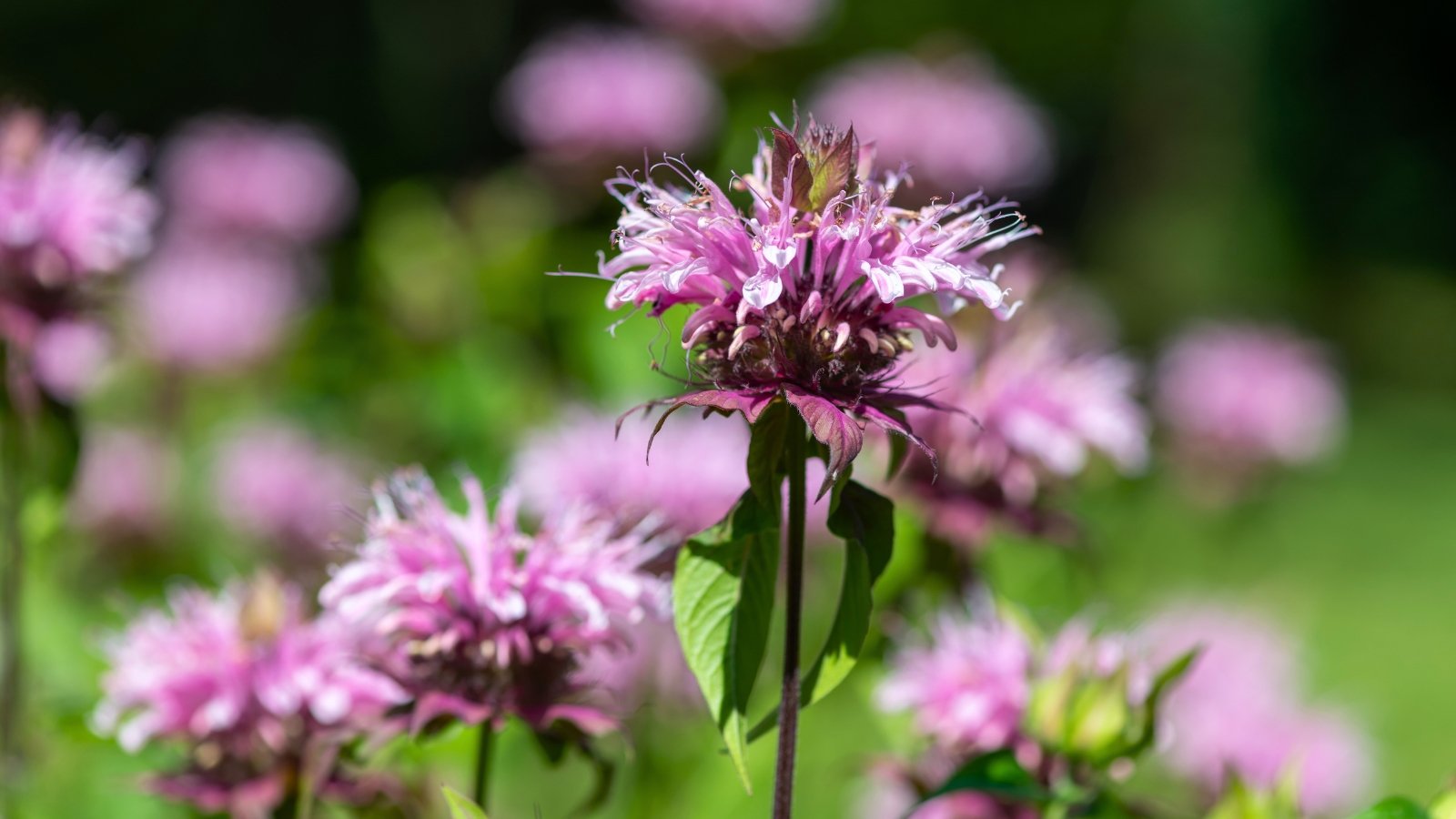 Dividing every few years keeps this plant happy.
Dividing every few years keeps this plant happy.Bee balm is a vibrant flowering perennial that thrives in Southern gardens. It blooms from late spring into the summer months and attracts a host of beneficial insects.
The flowers are intricate and beautiful, available in a range of shades, including red, pink, purple, and white. Deadheading will keep these blooming continuously, and dividing every few years helps with crowding.
Aside from those minor maintenance habits, bee balm needs little attention. In hot, humid climates, it performs best in partial shade with ample ventilation. Excessive crowding and humidity can lead to powdery mildew. Some species, such as M. fistulosa, are resistant to powdery mildew.
Scarlet Sage
 Grows happily even in poor, dry garden soil.
Grows happily even in poor, dry garden soil.For hot, Southern gardens, scarlet sage is a great, low-maintenance flowering perennial. In cooler climates, it’s a tender annual. This extra-long-blooming variety of salvia flowers from late spring until frost. The tubular red flowers are showy and popular with butterflies and hummingbirds.
Scarlet sage flourishes in full sun to partial shade, and doesn’t mind poor soil. Once established, it is drought-tolerant and requires minimal care. Occasional deadheading will prolong and amplify the blooming season. It reseeds readily, coming back year after year, naturalizing in the garden.
Goldenrod
 Cutting back in spring helps fresh growth burst.
Cutting back in spring helps fresh growth burst.Goldenrod truly gives an intense amount of bang for your buck. If you’re looking for a highly reliable Southern perennial flower, this one is perfect.
A fall bloomer, goldenrod produces large sprays of bright yellow flowers that are irresistible to bumblebees. This resilient, late-season bloomer is resistant to heat and drought.
I find goldenrod to be, truly, one of the most low-maintenance plants in my garden. Short of cutting it back in the spring, it needs little to no attention. Pinching will cause the plant to produce more flowers, but don’t wait too late in the season.
Butterfly Milkweed
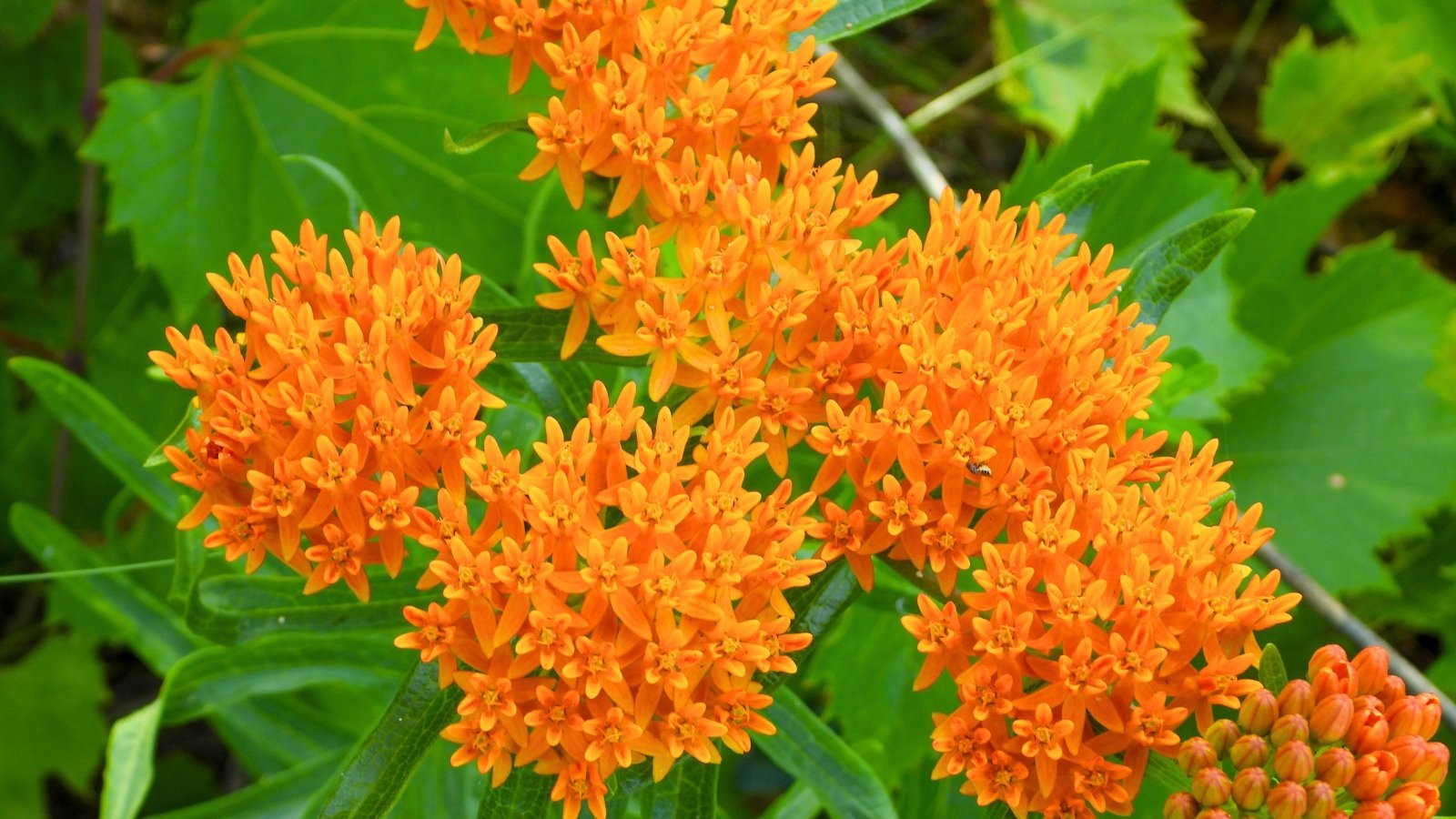 The clumping habit keeps the garden looking neat and tidy.
The clumping habit keeps the garden looking neat and tidy.Butterfly milkweed is a striking native flowering perennial that thrives in Southern gardens. It offers brilliant orange blooms from late spring through summer.
Unlike many other milkweeds, it has a tidy, clumping growth habit. This milkweed prefers dry, well-drained soil, making it ideal for hot, sunny locations across the South.
This drought-tolerant plant is a magnet for pollinators. Milkweeds are larval host plants for monarch butterfly caterpillars. They thrive in poor soils, are deer-resistant, and require little maintenance once established. With its vibrant color and rugged nature, butterfly milkweed is an excellent Southern perennial flower choice.

Blazing Star
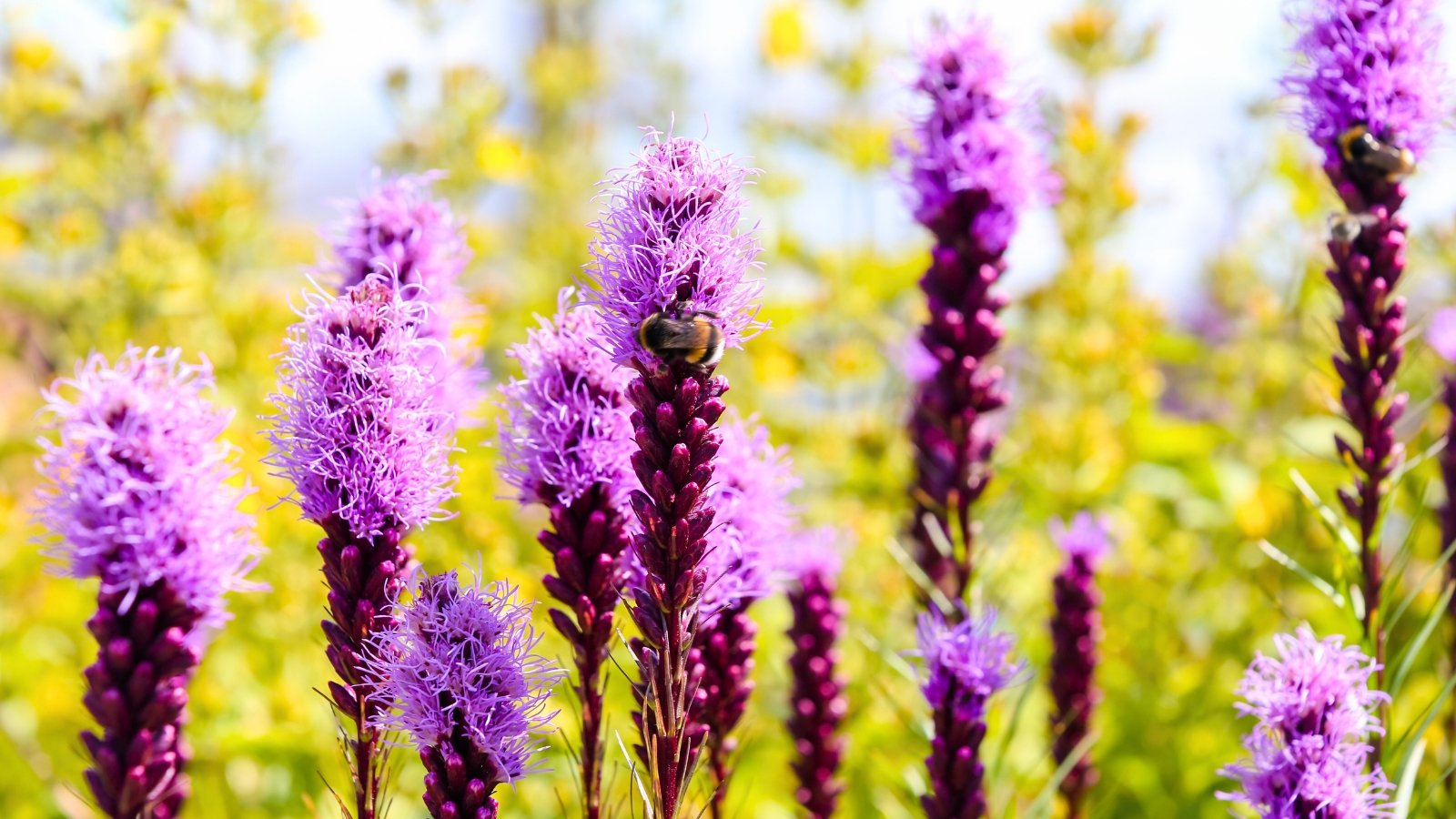 This perennial adds vertical drama with its grassy leaves and flowers.
This perennial adds vertical drama with its grassy leaves and flowers.Blazing star is a native flowering perennial that performs excellently in Southern gardens. Its tall, spiky purple blooms and grassy foliage are showy and long-lasting. They add vertical interest and rich color to flower beds, and attract a wide range of pollinators.
Well adapted to the South’s heat and humidity, blazing star grows best in full sun and well-drained soil. It can tolerate clay or sandy conditions once established. It’s drought-tolerant and low-maintenance, requiring minimal care aside from pruning in the spring.
You can plant corms in spring or fall, and it pairs beautifully with other natives like coneflowers and black-eyed Susans.
Daylily
 Gradually spreading clumps bring steady color with little fuss.
Gradually spreading clumps bring steady color with little fuss.Daylilies are spectacular flowering perennials. They are common in Southern gardens because of their vibrant blooms, toughness, and ease of care.
With flowers in nearly every color of the rainbow, daylilies bloom profusely from late spring through summer. Some reblooming varieties extend the show well into fall. Each bloom lasts just one day, but plants produce dozens to hundreds of buds over the season.
Daylilies thrive in the South’s heat and humidity, growing best in full sun to partial shade and well-drained soil. They are drought-tolerant once established, resistant to pests and diseases, and rarely bothered by deer.
These hardy, clumping perennials spread gradually. Divide them every few years to keep them looking healthy and maximize ventilation. Check the species you’d like to grow before planting to determine whether or not it is invasive in your area.
Blanket Flower
 Deer tend to avoid this tough, sunny garden favorite.
Deer tend to avoid this tough, sunny garden favorite.Blanket flower is a hardy, heat-loving, short-lived perennial. While individual plants don’t live more than a few years, they self-seed and colonize easily.
The name blanket flower refers to the fact that when in bloom, the dense flowering habit forms a carpet of color. If you want a Southern perennial flower that adds tons of color and needs little to no maintenance, this is about perfect.
Blanket flower thrives in hot, dry weather. It prefers well-drained soil and is well-adapted to sandy and poor soil types common in the South. Deer-resistant, drought-tolerant, and a favorite among pollinators, this is a standout choice for Southern gardens.
Perennial Phlox
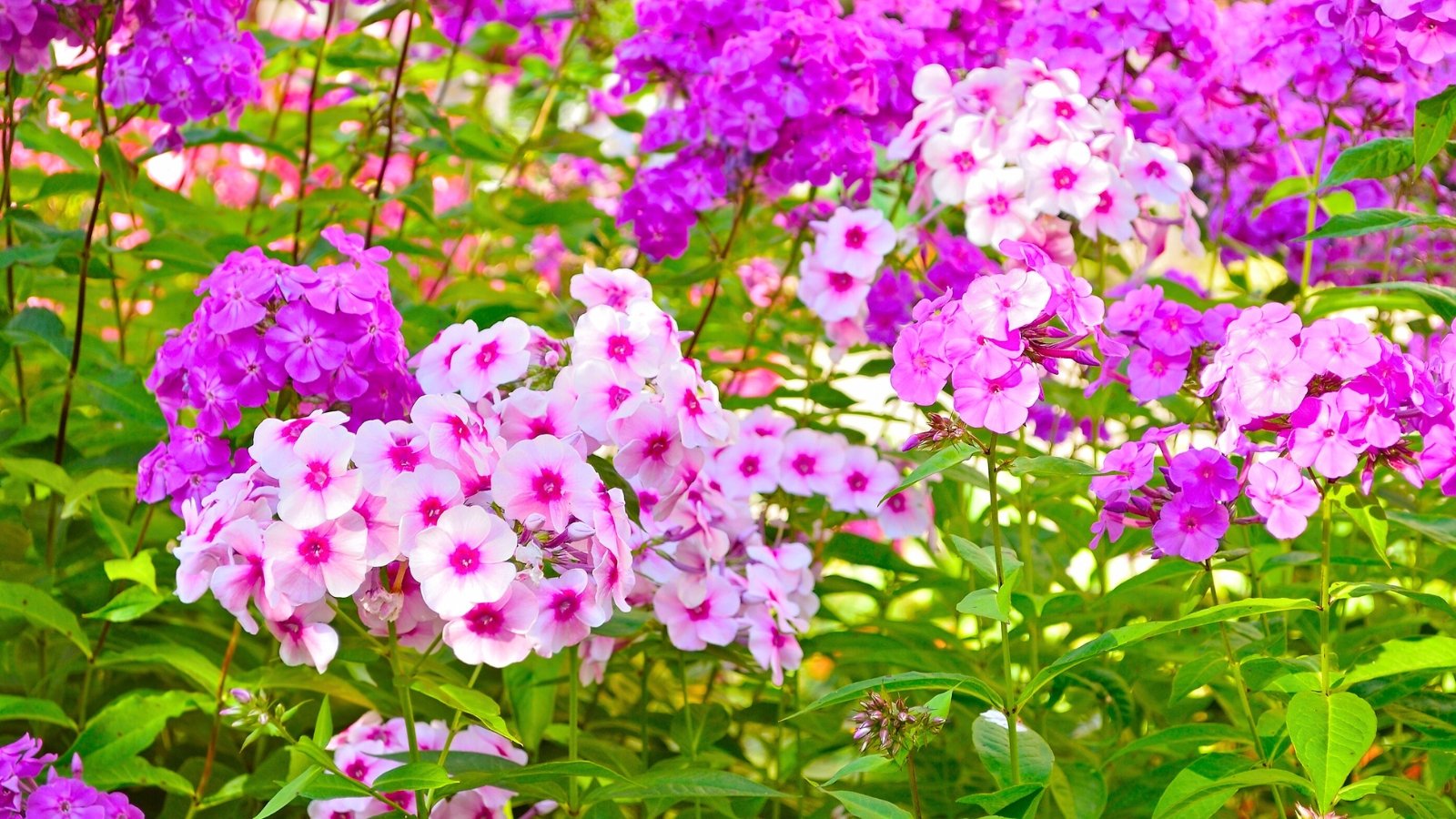 Phlox thrives with regular moisture.
Phlox thrives with regular moisture.Perennial phlox is a classic Southern perennial flower. It’s loved for its tall, fragrant flower clusters that bloom in shades of pink, purple, white, and red from mid-summer into fall. These showy perennials add vibrant color and height to gardens, often reaching 3 to 4 feet tall.
In Southern gardens, phlox thrives in full sun to partial shade and rich, well-drained soil. It appreciates consistent moisture, especially in the heat, but also benefits from good air circulation to help prevent powdery mildew.
Aside from its moisture needs, it’s a tolerant plant. It handles summer heat and pollinators favor it. Tall stems and beautiful, fragrant flowers make it a good choice for the cutting garden.
Lantana
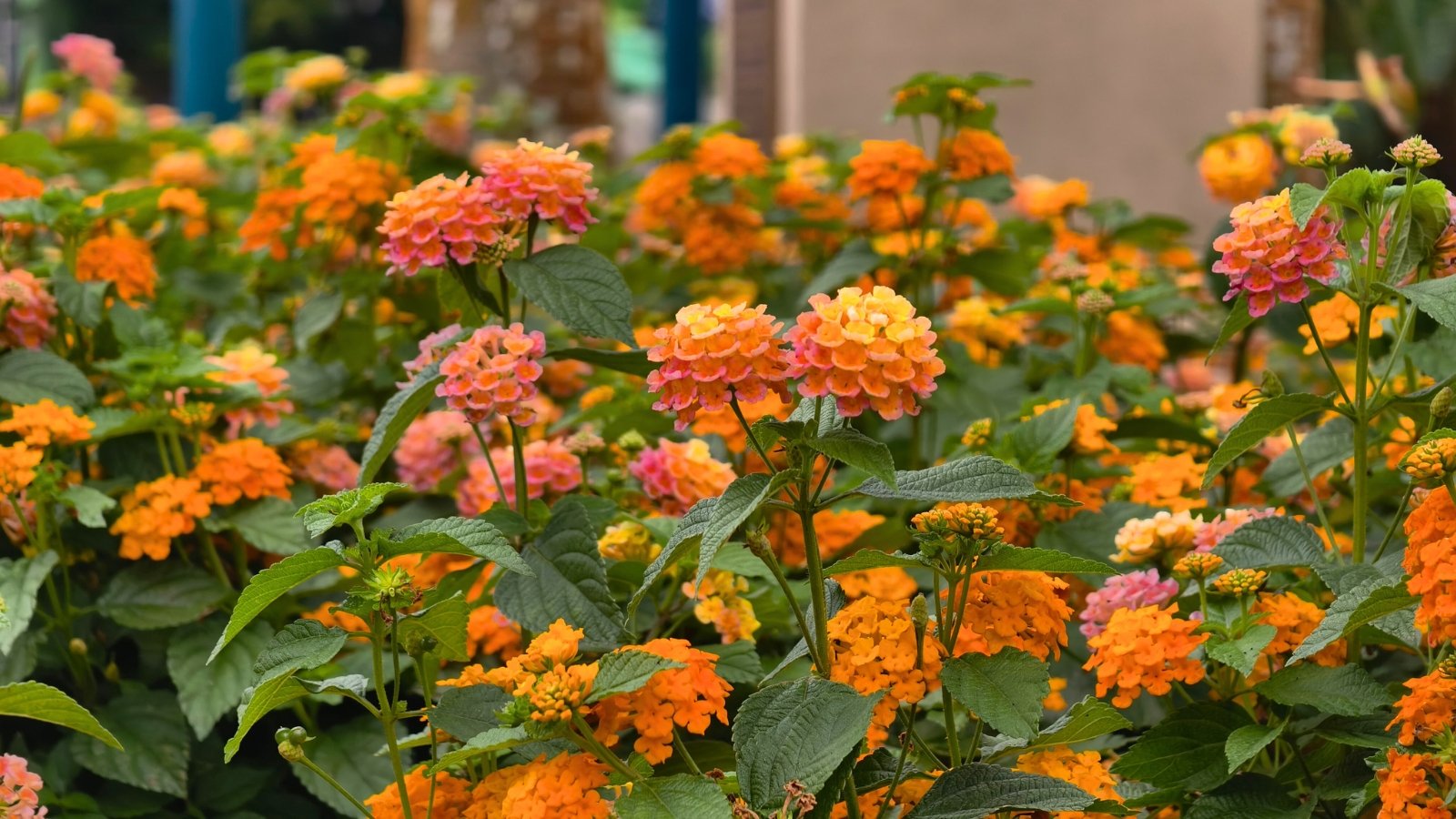 Vibrant clusters keep buzzing visitors coming all season.
Vibrant clusters keep buzzing visitors coming all season.Lantana is a colorful, heat-loving, flowering perennial. It thrives in the South, where long summers and hot temperatures bring out its best. It’s clusters of small, multicolored flowers in shades of red, orange, yellow, pink, and purple bloom continuously from late spring until frost.
Lantana is an excellent choice for attracting butterflies, bees, and hummingbirds. In the South, lantana grows as a perennial in warmer zones (zones 8 and above) or as an annual further north.
It’s happiest in full sun and well-drained soil. It tolerates drought, heat, and even sandy or rocky conditions once established. It’s also deer-resistant and rarely troubled by pests.
Some species of lantana are classed as invasive in the South. Check to see if yours is before planting in the ground.


 3 days ago
21
3 days ago
21

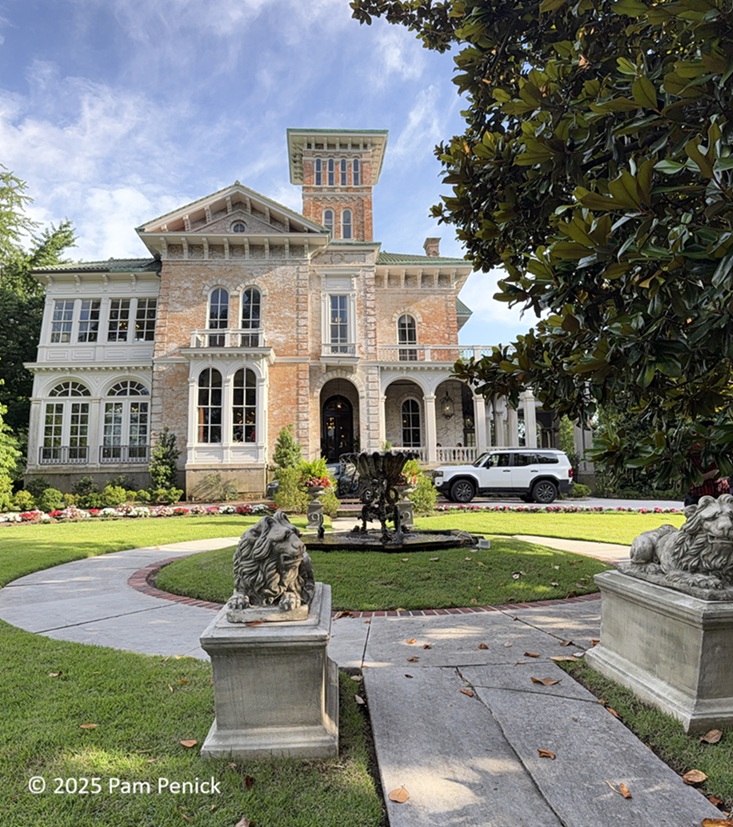


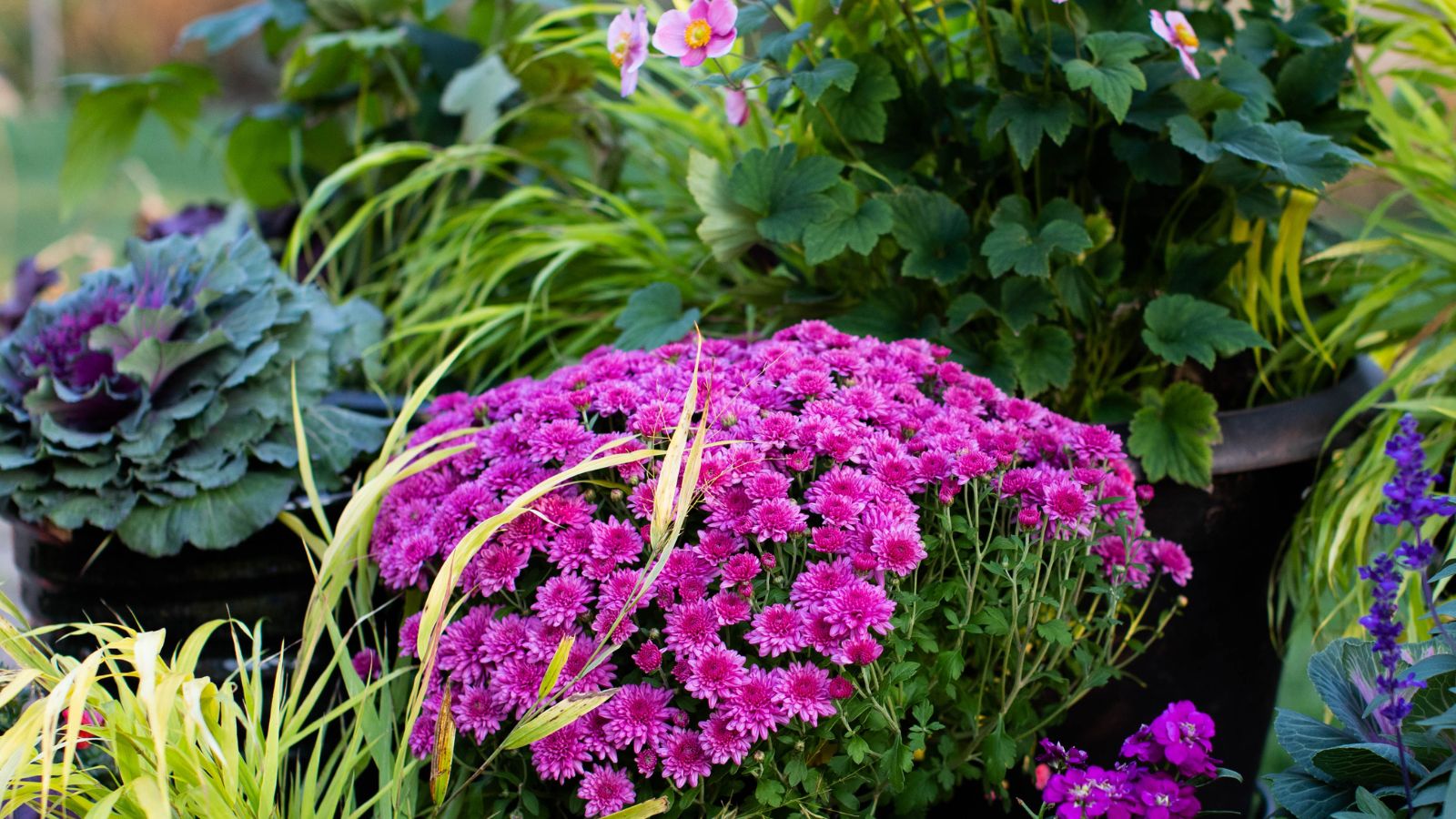
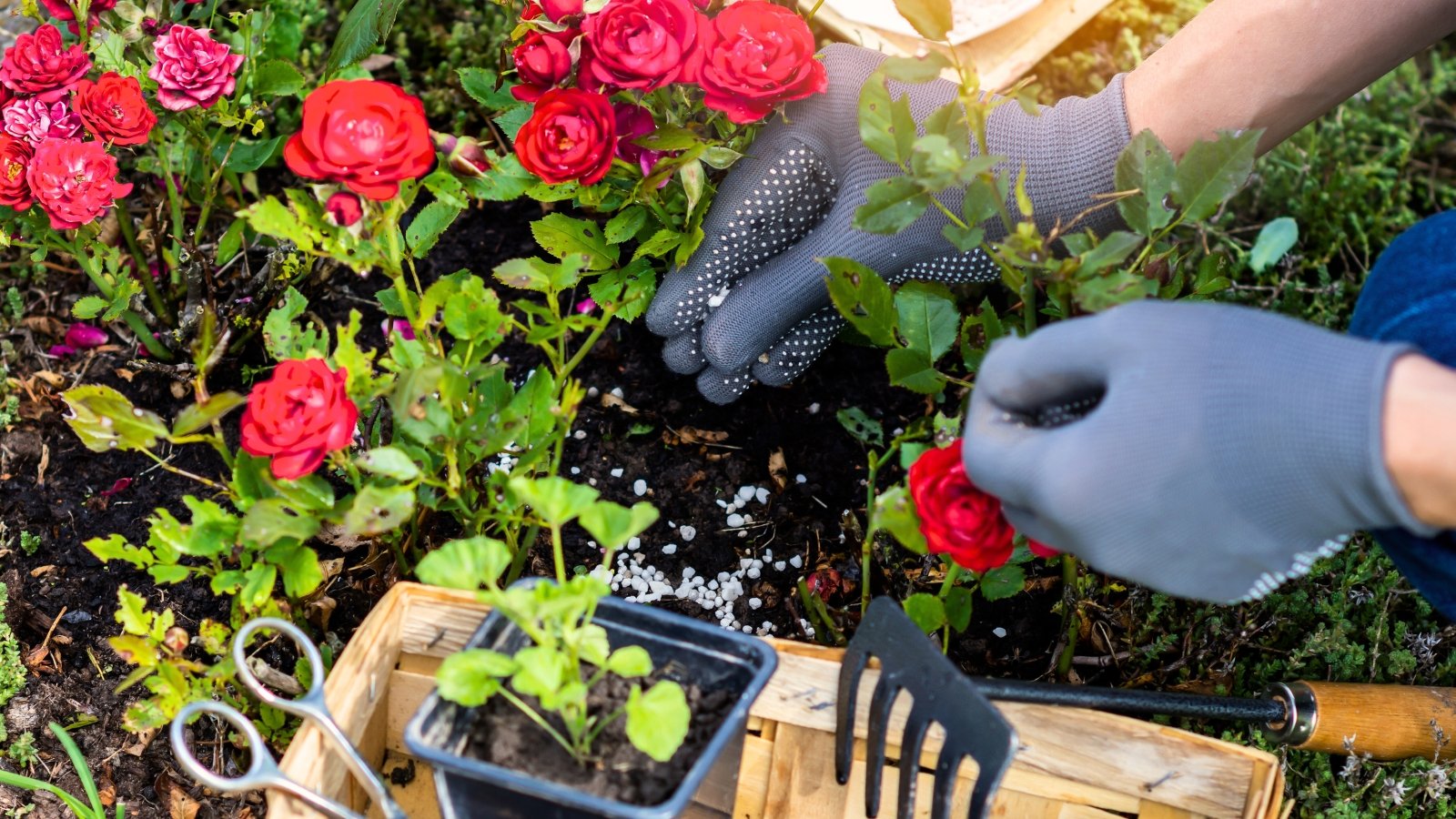
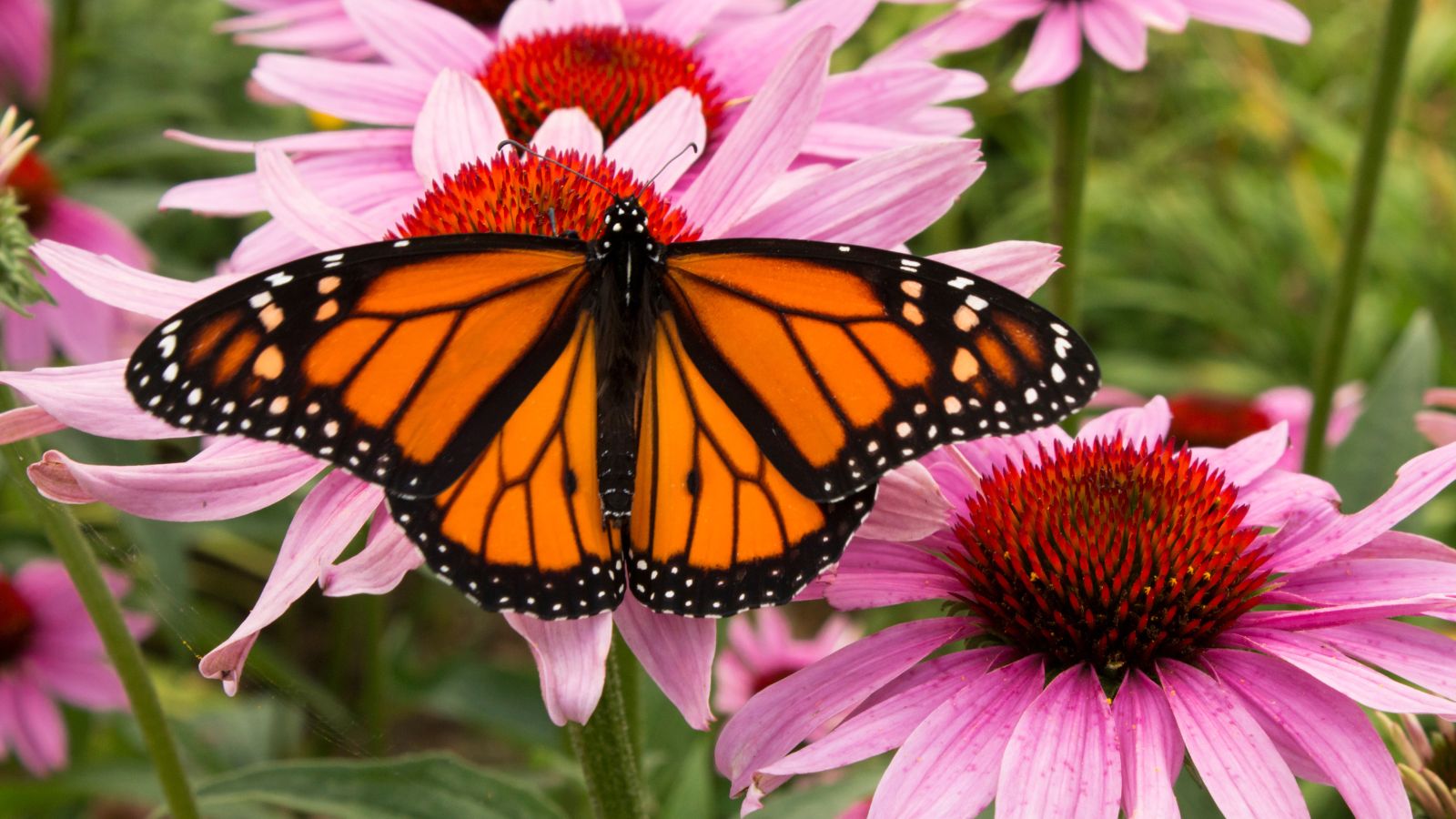














 English (US) ·
English (US) ·  French (CA) ·
French (CA) ·